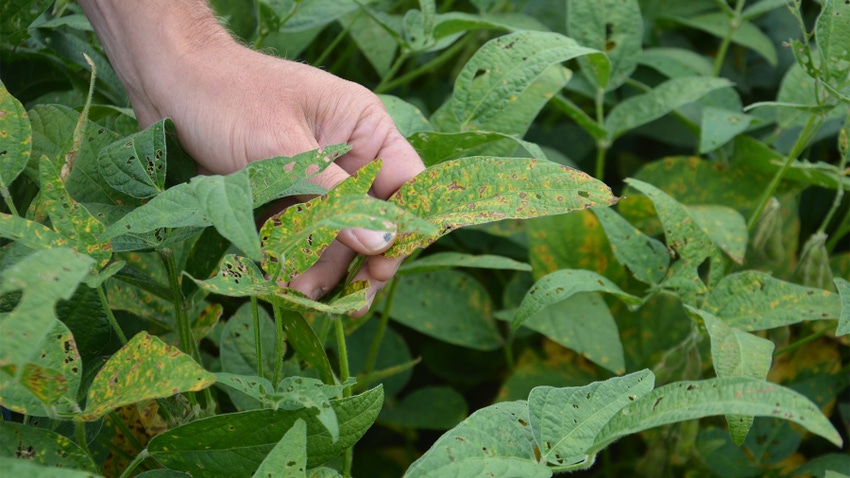September 6, 2023

Our crops consultant diagnosed sudden death syndrome in a few bean fields before harvest. It was severe enough in one field to cut yields noticeably. We haven’t had problems with it before. How should we adjust soybeans for next year?
The Indiana certified crop advisers panel answering this question includes Steve Gauck, regional agronomy manager for Beck’s, Greensburg; Bryan Overstreet, Conservation Cropping Systems Initiative agronomist, Valparaiso; and Dan Ritter, central region agronomist, Dairyland Seed.
Gauck: Rotating out of soybeans will help with SDS to an extent. Be sure to track fields that had SDS concerns, and make some adjustments the next time you plant soybeans in those fields. There are a few things you can look at that might help.
There is some genetic tolerance in certain soybean varieties. You can plant a variety that shows good field tolerance to SDS. Also, you should look at planting those fields later in your rotation. Early planting in fields with a history of SDS can cause concerns because SDS infection happens early in the season.
The next option is to look at seed treatments that suppress SDS. Remember that none of these options is 100% bulletproof, but they offer enough suppression that it should limit yield loss.
Overstreet: SDS is caused by a fusarium fungus that likes cool, wet conditions. This pathogen can last for several years in your fields, so rotation will not necessarily reduce the issue.
In those fields that you have the issue, make sure your soil fertility levels are good. The added stress of poor soil fertility can increase the severity of the disease. When you leave the field with tillage equipment, make sure it is clean, so you do not spread SDS to the next field.
When you plant soybeans next time, be more patient in those fields that you know have issues. Planting in cool, wet conditions are most favorable for SDS. Waiting until the ground is warmer and drier to plant will help you considerably in this situation.
Ritter: My first reaction as a seed agronomist is to recommend you select varieties with the best tolerance against SDS. Then, I would look at other factors that contribute to SDS.
Typically, earlier-planted beans are more susceptible to SDS, so target those fields for later planting. Soil compaction can also increase the occurrence of this disease, so consider practices that can alleviate soil compaction.
The final factor is soybean cyst nematode pressure. SCN and SDS tend to be found in the same field, so planting a soybean variety with a strong cyst nematode-resistance package would be advantageous in addition to following other SCN management practices.
Read more about:
Sudden Death SyndromeYou May Also Like




